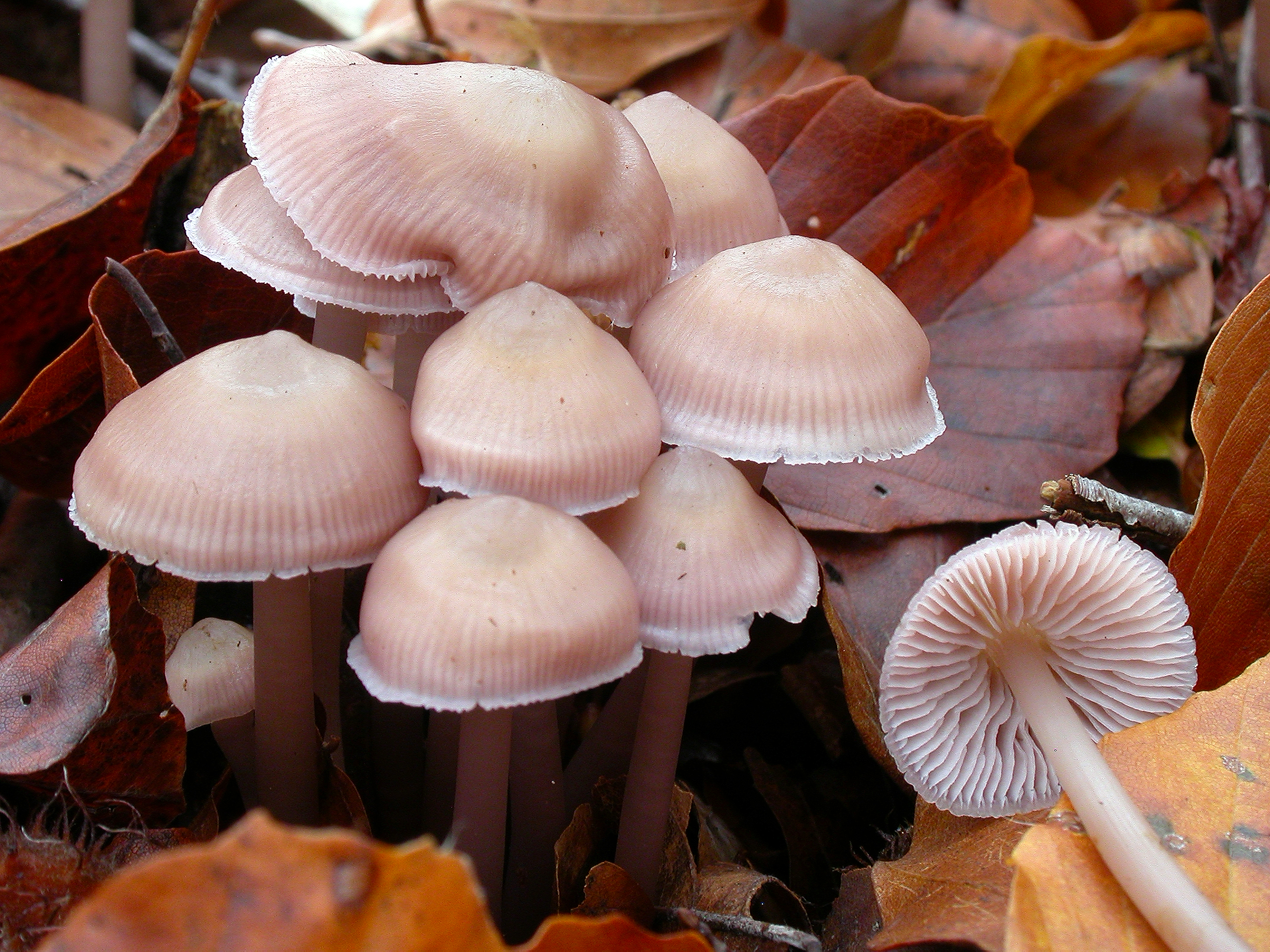Mycena pura
Mycena pura
Description
Cheilocystidia, basidium, spores, and hyphae of the cortical layer of the stem with caulocystidia.
Cap 10-50 mm across, parabolical to planoconvex, ±umbonate, or somewhat depressed, sulcate, translucent-striate, hygrophanous, glabrous, colours very variable, pale pink with a lilaceous tinge, pinkish grey, violaceous grey, to dark violet, but also white, yellow or light blue, often with a pale violet flush. Gills 20-40 reaching the stem, adnate to somewhat sinuate-adnate, sometimes also decurrent with a short tooth, dorsally intervenose at age, whitish to pale pink or pale violet, the edge concolorous. Stem 40-90 x 2-7 mm, tough, equal or broadened below, cylindrical to somewhat compressed, pruinose above, glabrous farther below, whitish to pinkish or violet, pinkish purple, the base more or less densely covered with long, coarse, whitish fibrils. Odour and taste raphanoid. Basidia 27-30 x 6-8 µm, clavate, 4-spored. Spores 6-9.5 x 4-5.2 µm, pip-shaped, amyloid. Cheilocystidia 25-75 x 11-18 µm, forming a sterile band, fusiform, clavate or subcylindrical, short- to long-stalked, smooth, apically broadly rounded, sometimes more attenuated or mucronate. Pleurocystidia similar. Lamellar trama dextrinoid. Hyphae of the pileipellis 2-5 µm wide, smooth. Hyphae of the cortical layer of the stem 2-4 µm wide, smooth, caulocystidia 25-72 x 9-15 µm, fusiform, clavate to subcylindrical, smooth. Clamps present in all tissues.
Ecology and distribution
Scattered in leaf humus and on needle beds, both in deciduous as well as in coniferous woods. Summer to autumn. Common all over the country.


